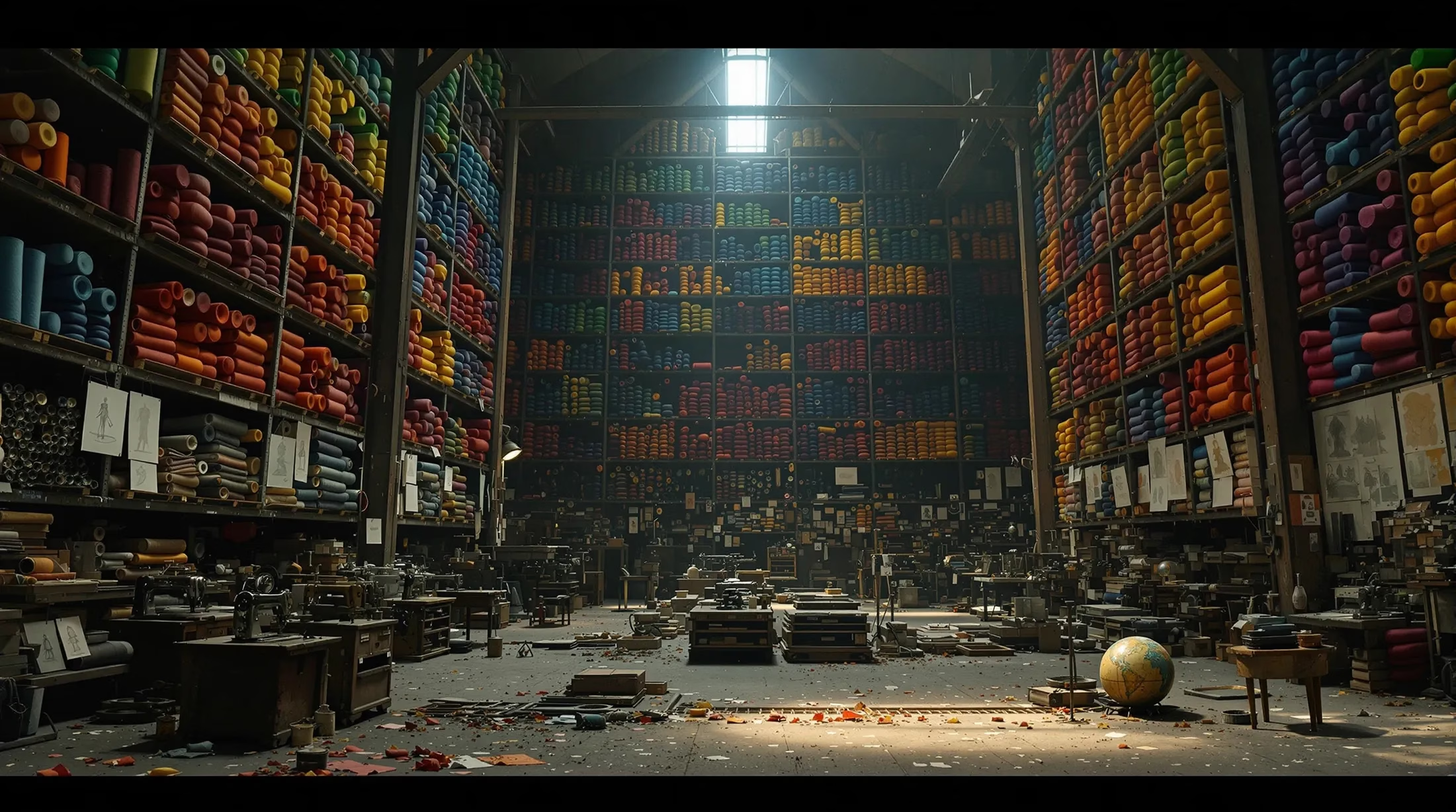Clothing Manufacturers: Your Guide to Finding the Best Suppliers
Looking to navigate the complex world of clothing manufacturing? Whether you’re launching a fashion brand or expanding your existing line, understanding how to partner with the right manufacturer is crucial for your success. Let’s explore the essential aspects of clothing manufacturing and how to find the perfect production partner for your business.
Understanding the Role of Clothing Manufacturers
Clothing manufacturers form the essential link between design concepts and retail-ready products in the fashion industry. These specialized facilities transform raw textiles into wearable garments through precise production processes, employing skilled craftspeople who bring designs to life. Their expertise extends beyond basic production, encompassing quality control, material optimization, and timeline management.
In today’s market, manufacturers distinguish themselves through various specializations and capabilities. Many focus on specific niches, such as sustainable production methods or particular fabric types, while others offer comprehensive services for diverse clothing lines.
What Do Clothing Manufacturers Do?
- Pattern creation and development
- Material cutting and preparation
- Garment assembly and construction
- Quality inspection and control
- Finishing processes (buttons, zippers, pressing)
- Packaging and preparation for shipping
Beyond production, manufacturers often provide valuable additional services including fabric sourcing, sample development, and logistics management. Their expertise in materials, construction techniques, and equipment operation ensures products meet exact specifications while maintaining efficiency.
Types of Clothing Manufacturers
| Type | Services | Best For |
|---|---|---|
| Full-package | Design assistance to delivery | Brands seeking complete solutions |
| Cut-make-trim (CMT) | Production only | Brands handling own sourcing |
| Mass-market | High-volume production | Large-scale operations |
| Boutique | Small-batch production | Premium/luxury brands |
How to Find the Best Clothing Manufacturers
Finding the right manufacturing partner requires careful consideration and strategic research. The industry’s fragmented nature can make this process challenging, but understanding your specific needs and following a structured approach will help identify suitable partners.
Researching Potential Suppliers
- Attend industry trade shows (Magic, Texworld)
- Utilize online platforms (Maker’s Row, Alibaba)
- Network with industry professionals
- Request samples and evaluate quality
- Review minimum order quantities and lead times
Evaluating Manufacturer Capabilities
When assessing potential manufacturers, examine their technical expertise, equipment sophistication, and quality control processes. Consider their specialization in specific garment types and their ability to handle your particular requirements. Factory visits provide invaluable insights into operations, working conditions, and quality assurance protocols.
Focus on evaluating their problem-solving abilities and commitment to maintaining consistent quality standards. The ideal manufacturer should demonstrate both technical proficiency and flexibility in addressing production challenges while maintaining clear communication throughout the process.
Building Relationships with Suppliers
Establishing strong relationships with clothing manufacturers requires investment in clear communication and mutual understanding. The most successful brand-manufacturer partnerships begin with transparency about expectations, capabilities, and limitations. To build a solid foundation, provide comprehensive information through detailed tech packs, material specifications, and quality standards while understanding your manufacturer’s workflow and communication preferences.
- Regular communication and feedback loops
- Clear documentation of requirements and specifications
- Understanding of production calendars and timelines
- Respect for manufacturer’s processes and limitations
- Consistent order patterns and prompt payments
Long-term partnerships yield significant benefits throughout the fashion supply chain. As manufacturers become familiar with your brand’s specific requirements, you’ll likely experience reduced sampling time, fewer errors, and improved consistency across production runs. These established relationships often lead to preferential treatment in:
- Production scheduling flexibility
- Favorable payment terms
- Reduced minimum order quantities
- Access to innovative solutions and improvements
- Priority status during peak seasons
Ensuring Quality and Ethical Standards
In the contemporary market, quality control and ethical manufacturing have become fundamental requirements for clothing manufacturers. Brands’ reputations now depend not only on product quality but also on production methods. Implementing rigorous quality standards while maintaining ethical practices creates a competitive advantage that resonates with modern consumers who prioritize both product longevity and social responsibility.
Importance of Quality Control
Quality control serves as the cornerstone of brand reputation and customer satisfaction in garment manufacturing. Effective quality management systems involve multi-stage inspections throughout the production process:
- Incoming material verification
- Cutting accuracy assessment
- Sewing quality checks
- Finishing inspection
- Final product evaluation
- Statistical process control
- Data analytics for continuous improvement
Ethical and Sustainable Manufacturing Practices
Ethical manufacturing represents a comprehensive commitment to responsible production practices, extending beyond basic regulatory compliance. Leading manufacturers implement enhanced protocols covering:
| Area | Implementation |
|---|---|
| Labor Practices | Fair wages, safe working conditions, appropriate work hours |
| Environmental Impact | Water conservation, energy efficiency, waste reduction |
| Supply Chain | Transparent documentation, independent audits, continuous monitoring |
| Sustainability | Recycled materials, zero-waste techniques, circular economy principles |
Trends in the Clothing Manufacturing Industry
The textile industry is experiencing rapid transformation as consumer preferences and technological capabilities evolve. Today’s manufacturing landscape features specialized producers responding to market demands with unique approaches. Industry leaders are focusing on creating high-quality private-label clothing that caters to both established brands and emerging designers, emphasizing customization and flexibility throughout the development process.
Contemporary manufacturers distinguish themselves through specialization and value-added services rather than competing solely on price. As supply chains become more transparent, manufacturers who provide comprehensive support throughout the development process are gaining market share and fostering stronger client relationships.
Technological Advancements in Apparel Production
Digital transformation is revolutionizing the textile industry through smart factories that integrate advanced technologies to enhance efficiency and product quality. Modern manufacturing facilities now utilize sophisticated Computer-aided design (CAD) systems connected to automated cutting machines, significantly reducing fabric waste while improving precision. The implementation of 3D sampling technology enables virtual prototyping, dramatically reducing development time and resource consumption while facilitating rapid iterations and approvals.
- Automated spreading machines for consistent material handling
- Precision laser cutting systems for improved accuracy
- Programmable sewing equipment for standardized production
- Integrated quality control systems
- Digital pattern development tools
- Real-time production monitoring capabilities
Forward-thinking manufacturers like Tack Apparel leverage these technological capabilities to deliver comprehensive services from concept to completion. Their technology-enabled support system guides clients through each production phase, including pattern development, material selection, and quality assurance, creating a more streamlined manufacturing process beneficial to both established brands and market newcomers.
The Rise of Sustainable Fashion
| Sustainability Area | Implementation Strategies |
|---|---|
| Energy Management | Renewable energy sources, energy-efficient machinery |
| Water Conservation | Recycling systems, water-efficient processes |
| Material Usage | Zero-waste cutting techniques, recycled fibers |
| Ethical Standards | Fair labor practices, safe working conditions |
Sustainable fashion has transformed from a niche segment into a dominant industry force, reshaping production decisions throughout the supply chain. Progressive manufacturers are implementing comprehensive sustainability initiatives that address environmental impacts at every stage of production. These approaches encompass renewable energy adoption, water conservation systems, and innovative cutting techniques that optimize material usage.
Material innovation leads the sustainable fashion movement, with manufacturers incorporating recycled fibers, organic textiles, and biodegradable alternatives into mainstream production. Certification programs like Global Organic Textile Standard (GOTS) and Fair Trade provide third-party verification of sustainability claims, offering manufacturers competitive advantages in an increasingly conscious market. As demand for responsibly-produced clothing grows, manufacturers prioritizing environmental stewardship and social responsibility are positioned to lead the industry’s sustainable evolution.







